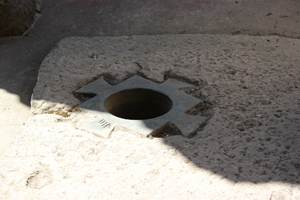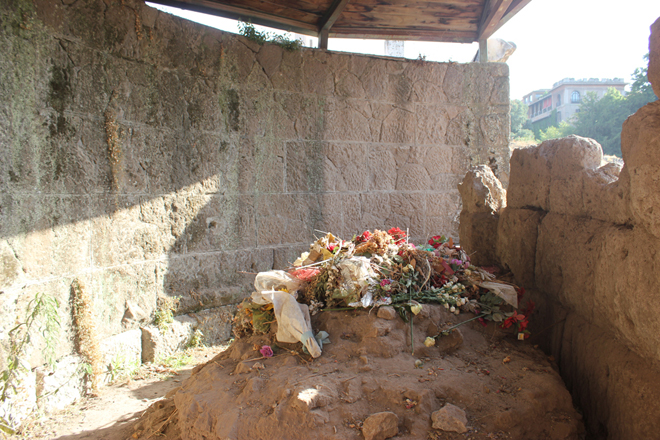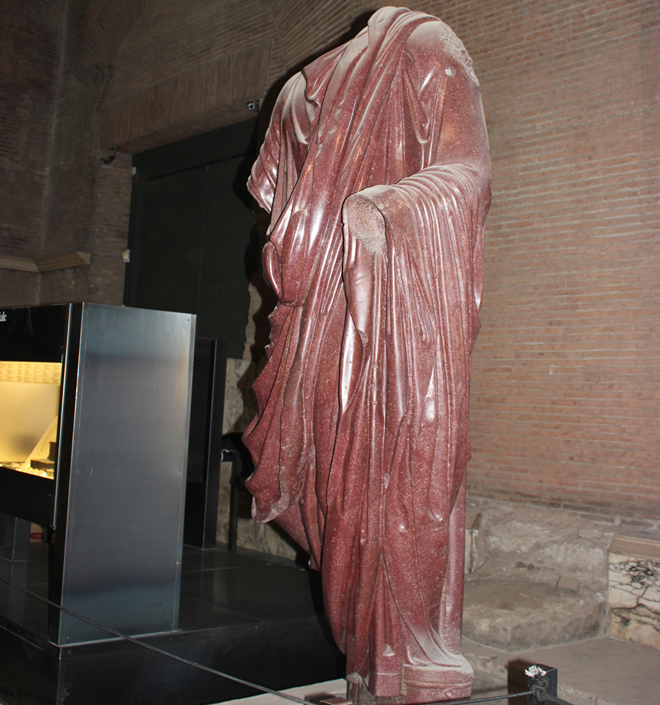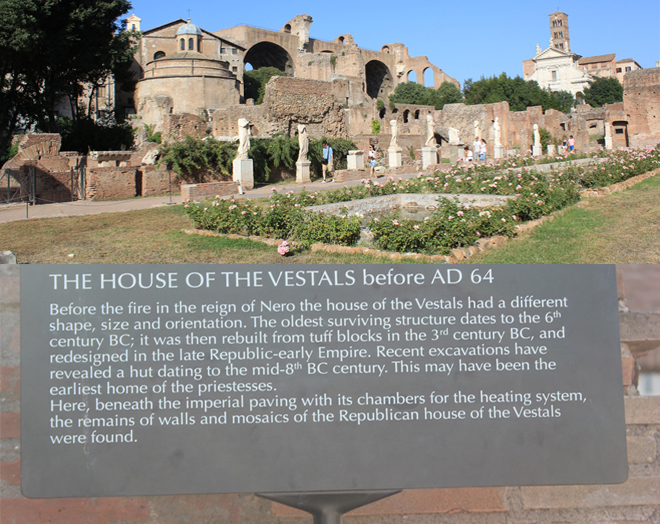Written by: Dr. Dushka H. Saiyid - Posted on: December 04, 2012 |  Comments | 中国 (Chinese)
Comments | 中国 (Chinese)
Google Translation: اُردو | 中文
Since I had not visited Rome since my undergraduate days, my recent visit there was a voyage of re-discovery. The advantage of staying in centro storico, or the historical centre, was that most of the monuments and piazzas of interest were a walking distance. Rome is a collage of antiquity and the Renaissance, a juxtaposition that gives the city its uniqueness. No other city has this advantage, except for Delhi, where Old Delhi of the Mughal era, co-exists with the New Delhi of Lutyens, the architect who reflected the British imperial vision.
 |
| Remnant of winch in the hypogeum |
If the Colosseum is a symbol of the might and brutality of Rome, then the Forum is an expression of their highly evolved civic life. The Forum, ruins of the city centre of antiquity, is next door to the Colosseum: a public place with temples, marketplace, rostrum, the atrium of the vestal virgins, a small monument where Caesar was cremated, and a restored curia, where the Senate met. As I stood inside the little monument that Caesar’s nephew Octavius (who later became Emperor Augustus) had made for him, I was reminded of Babar’s (the founder of the Mughal empire) tomb, just outside Kabul, which was equally unassuming. Shakespeare’s words uttered through Casius in Julius Caesar, came to mind:
“Why, man, he doth bestride the narrow world
Like a Colossus, and we petty men
Walk under his huge legs and peep about
To find ourselves dishonourable graves.
 |
| Grave of Julius Caesar |
It was a humbling experience, for this is all that remained of this great man. His murder was the death knell for the Roman Republic, which became an empire under his nephew and adopted son, Octavius.
 |
| Inside the curia, at the Roman Senate |
The curia, where the Senate debated the issues of the empire, is a small chamber, and was restored in 1937. Here the issues concerning the Roman Republic were debated and decided, a centre of power struggle. It was in the Senate that Caesar was felled by his fellow Senators. Close by is the rostrum, where the politicians harangued the people, and where Mark Antony is supposed to have made the famous speech inciting the people against the assassins of Caesar. The atrium of the Vestal Virgins is just a few minutes’ walk; a few statues are all that is left of their fifty room house. The Vestal Virgins were named as such, because they took a vow of chastity, and were entrusted with the execution of all the sacred rituals for the safety and security of Rome.
 |
| House of the Vestal Virgins |
Overlooking the Forum is the Palatine hill, where the ruling elite had their villas. Quiet and verdant, with breeze blowing through the trees, it feels as if its erstwhile powerful and wealthy residents, who ruled half the world, are still floating around, unable to leave their old villas.
The success of the Roman civilization lay in its advanced civil engineering, a highly disciplined and well-organised military, and a state underwritten by Roman law. Their conquest of territories extended from Britain to the eastern Mediterranean, covering most of Europe and parts of north Africa. The ruins tell the story of the Roman civilization, in all its terrible grandeur.
Click to view picture gallery